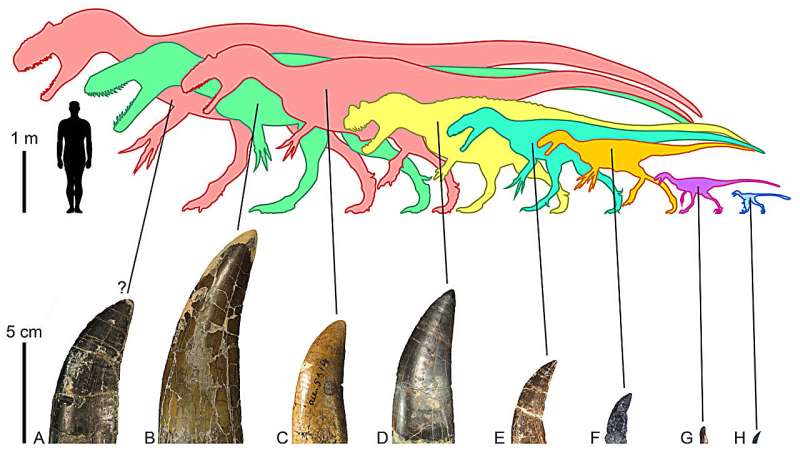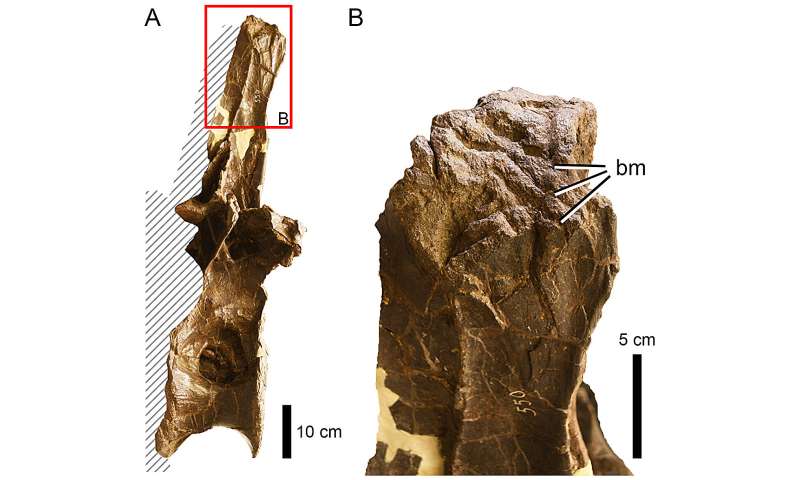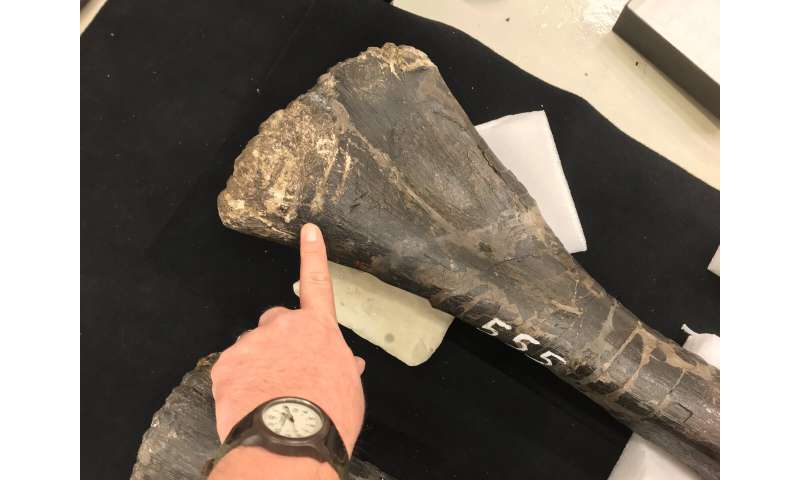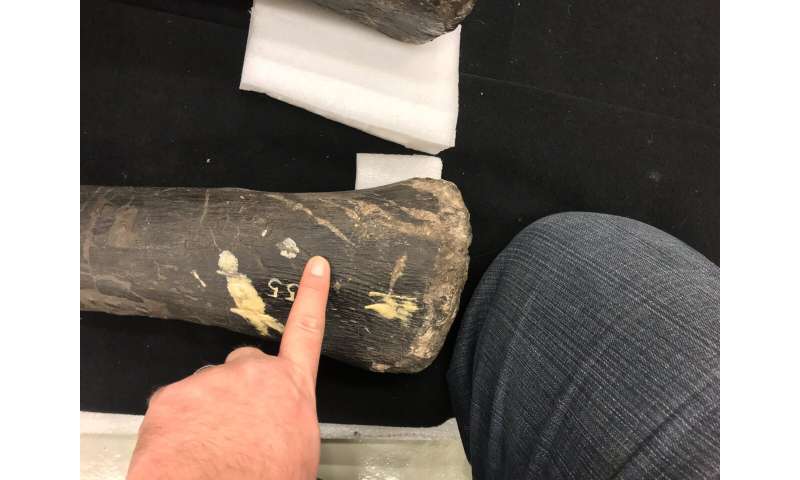This article has been reviewed according to Science X's editorial process and policies. Editors have highlighted the following attributes while ensuring the content's credibility:
fact-checked
peer-reviewed publication
trusted source
proofread
New study reveals surprising insights into feeding habits of carnivorous dinosaurs in North America

New research sheds light on the dining habits of ancient carnivorous dinosaurs from Jurassic rocks of the U.S.. A recent study published in PeerJ by Roberto Lei (Università degli Studi di Modena e Reggio Emilia) and colleagues explores the bite marks left on the ancient bones of the giant long-necked sauropod dinosaurs like Diplodocus and Brontosaurus by carnivorous theropod dinosaurs.
Tooth-marked bones provide invaluable insights into the feeding behaviors of long-extinct carnivorous creatures. While it is commonly thought that the giant tyrannosaurs were the primary culprits behind these tell-tale marks on dinosaur bones, the research conducted by Lei and colleagues takes a closer look at other large carnivores' contributions to this paleontological puzzle.
The study presents the results of an extensive survey of the literature and fossil collections, revealing a striking discovery: 68 sauropod bones from the Upper Jurassic (c. 150 million years old) Morrison Formation of the U.S. bear unmistakable bite traces attributed to theropods.
The team's findings suggest that while bite traces on large sauropods were less common than in tyrannosaur-dominated environments, they are nonetheless abundant in the Morrison Formation and more so than previously realized. A particularly intriguing aspect of their discovery is that none of the observed traces showed any evidence of healing, indicating that these bites occurred either in a single, lethal encounter or more likely were post-mortem feeding traces from scavenging.
-

(A) Neural spine summit of the dorsal vertebra of Apatosaurus sp. (AMNH FARB 550) showing (B) extensive bite traces (in dorsolateral view). This region was unlikely to be the site of a predatory attack. Credit: PeerJ (2023). DOI: 10.7717/peerj.16327 -

Theropod bite marks on limb bones of CM 555, a juvenile individual of Brontosaurus parvus from Wyoming. Credit: Mathew J. Wedel, Western University of Health Sciences -

Theropod bite marks on limb bones of CM 555, a juvenile individual of Brontosaurus parvus from Wyoming. Credit: Mathew J. Wedel, Western University of Health Sciences
The team also looked at the wear on the teeth of Morrison Formation theropods and found that they similarly show wear associated with biting bones more often than previous realized and are closer to the patterns seen in the large tyrannosaurs. However, attributing bite traces to specific theropod taxa remains a complex challenge due to the presence of multiple credible candidates and so it is very hard to attribute any single bite on the sauropod bones to the predators around like Allosaurus and Ceratosaurus.
Dr. David Hone of Queen Mary University of London, the corresponding author of the study, says, "This new work helps us understand the ecological relationships between dinosaurs in the Jurassic and reveals that the habits of the larger carnivores then were closer to that of the tyrannosaurs than previously thought. It's another important step in reconstructing the behavior of these ancient animals."
This research not only enhances our understanding of ancient ecosystems and the dynamics between predator and prey but also raises intriguing questions about the intricate web of life in the late Jurassic period. By focusing on bite and tooth marks, the authors have opened up a new window of investigation and knowledge, where these remarkable conclusions tell a story of predators and their interactions with some of the largest creatures to ever roam the Earth.
The full article, "Bite and tooth marks on sauropod dinosaurs from the Morrison Formation," is available to read in the open access journal PeerJ.
More information: Bite and tooth marks on sauropod dinosaurs from the Morrison Formation, PeerJ (2023). DOI: 10.7717/peerj.16327
Journal information: PeerJ
Provided by PeerJ





















